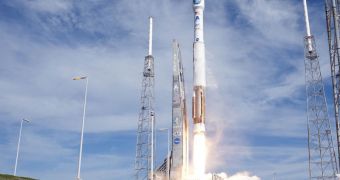The NASA Solar Dynamics Observatory has just turned 1 in Earth's orbit, officials from the American space agency are delighted to announce. The instrument has thus far sent back millions of images, and has helped increase our understanding of how the Sun operates.
SDO launched from Space Launch Complex 41 at the Cape Canaveral Air Force Station, in Florida. The instrument was carried to orbit by the Atlas V 401 delivery system. Launch took place at 15:23 UTC, on February 11, 2010.
Over the past few months, the observatory has spent countless hours snapping millions of image of the Sun and the events taking place on its surface. It was the first spacecraft to be launched under the NASA 'Living with a Star' program.
The interactions taking place between the solar surface and its atmosphere (the corona) have been a subject of study for many years, and the SDO is joining the rest of the NASA fleet tasked with teasing out these factorial interplays.
“One of the highlights of the last year is just that everything worked so smoothly,” explains SDO project scientist Dean Pesnell.
“We turned it on in March and it immediately started sending us data at 150 megabits per second. It worked from the very get go.” adds the expert, who holds an appointment as an astrophysicist at the Greenbelt, Maryland-based NASA Goddard Space Flight Center (GSFC).
“It's been great to watch how popular these images are. The public has been extremely interested. And it's important that people see what the Sun is doing and how it affects us,” says GSFC astrophysicist and SDO deputy project scientist Phil Chamberlin.
The telescope is capable of snapping photos at 10 different wavelengths with its Atmospheric Imaging Assembly (AIA) instrument alone. The detector images the Sun once every 12 seconds.
On the other hand, the Extreme Ultraviolet Variability Experiment (EVE) is keeping track of the unseen variations of the star, which take place in the extreme ultraviolet portion of the electromagnetic spectrum.
The third onboard instrument, called the Helioseismic and Magnetic Imager (HMI), closely monitors the seismic activity on the surface of the Sun, as well as the evolution of its magnetic field over time.
“These are the doorway to the interior of the Sun. This is how we understand what's going on inside it,” Pesnell explains.
Together with the Reuven Ramaty High Energy Solar Spectroscopic Imager (RHESSI) and the NASA STEREO spacecraft, the SDO is beginning to provide the American space agency with the capabilities it's looking for in keeping a constant eye on the Sun.

 14 DAY TRIAL //
14 DAY TRIAL //